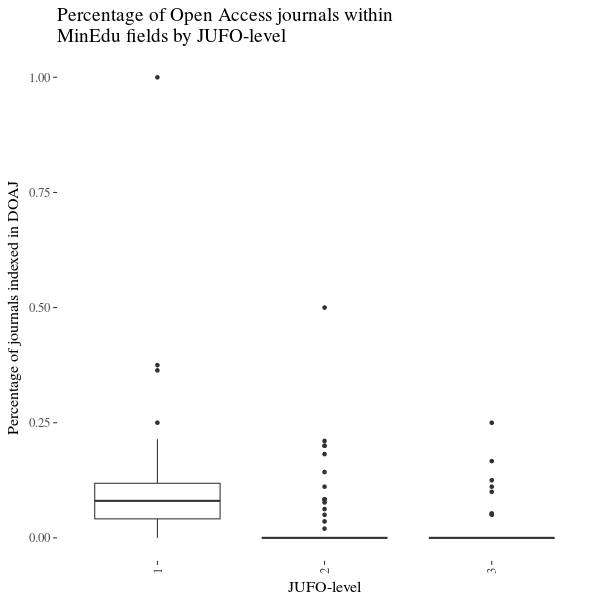The Ministry of Education distributes money among universities, and universities distribute it along to departments partially based on the number and quality of the publications they produce. The quality of publications measured with a Publication Forum (or JUFO) level (http://
I asked for and received the JUFO publication database to see if the JUFO classification causes incentives to not publish in Open Access journals. JUFO is not formally used to assess the works of individual researchers, but in practice it has substantial steering power on where people decide to publish, since publications in channels with higher JUFO levels earn one’s department more money. In fact, one of the stated objectives of the Publication Forum is ”to encourage Finnish scholars and researchers to publish their research outcomes in high-level domestic and foreign forums” (http://
For each publication channel the database contains information on the JUFO level and whether it is indexed in the Directory of Open Access Journals (DOAJ), among other things. The database also contains different classifications to scholarly fields of which I used the ministry’s own classification. I only included English language journals and those journals classified as scientific (as opposed to for example professional journals, these contain also journals from the humanities).
I calculated the percentage of OA-journals within a scientific field and by JUFO level (see picture). What I found out was that while most fields have OA journals acknowledged as ”scientific” (85%), the opposite is true for JUFO levels higher than one (30%). What is quite troubling is that 15 % of scholarly fields seem not to have even one Open Access English-language journal classified as JUFO level 2 or 3.
The take home message then is, that the current way of assessing the quality of publications creates a strong incentive to NOT publish in Open Access journals, which is against the stated objectives of increased openness of both the Ministry of Education and the universities (see for example http://
My recommendation is to stop using journal-level metrics to assess the quality of publications.

